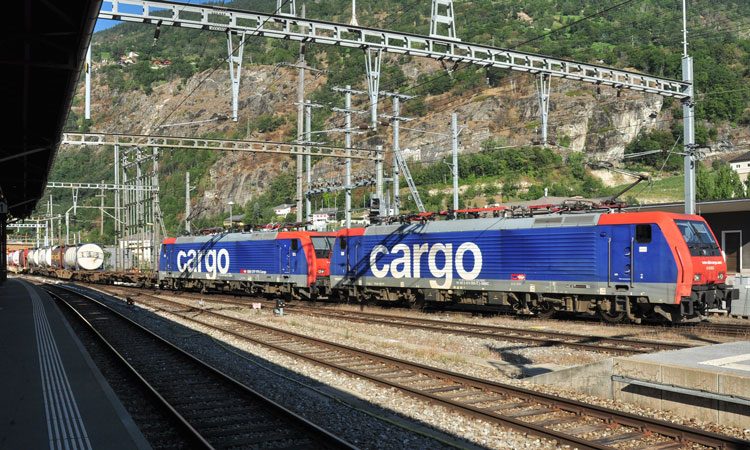The future developments for rolling stock in rail freight
Posted: 16 March 2017 | Jens-Erik Galdiks (SBB Cargo) | No comments yet
Jens-Erik Galdiks, Head of Rolling Stock Technology at SBB Cargo AG, believes that the mobility of the future is driven by various game changers that will significantly change the flow of goods and the configuration of logistics systems in the coming years.


Challenges caused by changes in the environment
The lure of the road and its competitiveness as a means of transport will continue to increase, particularly through electro mobility and autonomous vehicles. As a result of digitalisation and the increasing interconnection of goods and their logistics, large efficiency gains in road transport are to be expected. With the growing demands from the individualised flow of goods, eCommerce and same-day-delivery, the demands on logistic performance are increasing and requiring greater production efficiency through innovative solutions. At the same time, jobs in the railway sector will become increasingly attractive and more demanding through digitalisation and automation. Population growth and decreasing lot sizes lead to an increase in transportation demand. As a consequence, firms need to scale-up the infrastructure or face production bottlenecks. Infrastructure shortcomings will be the future challenge for policy-makers, rolling stock manufactures and railway companies.
New technologies and standards – a key to success
European rail freight transport has a strong historical base. It is geographically very fragmented and therefore less attractive as a business field for technological innovations. The existing standards and national specifics inhibit a fundamental renewal which is now more important than ever. The capital needed for introducing changes in existing fleets of classic freight cars and their normal 40-year life-cycle make the implementation of innovations difficult. Therefore only a few innovations have been implemented successfully during the last few decades. To overcome these hurdles, the rail industry needs to get
back to the drawing board and fundamentally rethink how they can deploy state-of-the-art assets. Both disruptive innovations as well as incremental innovations to renew the fleets are needed.
Moreover, a new standard is required and we must prevent country specific solutions. Since the standardisation methods used so far have been extremely slow, a more agile approach is needed to achieve rapid initial success. At the same time, all players have to work together to establish industry-wide standards to move the railway sector out of its technical niche. To achieve efficiency gains, improve customer offerings and increase the competitiveness of the entire railway sector, we need to act now.
What needs to be done?
Railway undertakings need assets that allow them to provide completely new services to customers and improve their product quality. The railway system also has to be designed more efficiently to both accelerate processes and reduce costs. Aspects such as track-friendliness, reduced energy consumption and reduced noise become increasingly important. Today’s production processes must be automated and the railway needs to be digitalised to meet the
requirements of a railway system 4.0.
First of all, elements such as automatic couplers; automated operation processes such as automated brake tests, semi-automatic shunting locomotives; extended wayside testing devices; and new inspection processes for technical inspections are required. These improvements can also be realised on existing freight wagons. An important aspect will be during migration, as some changes will significantly reduce compatibility with the previous system.
Intelligent freight cars will be an important first step towards ‘Rail 4.0’. Such cars will be equipped with various sensors to monitor door status, temperature, loading conditions and axle weights. Intelligent cars will also have RFID tags, geo-localisation and a power supply. Sensor data can also be used for general status monitoring and predictive maintenance.
Further improvements to the railway system can be achieved with development of entirely new asset designs. Technologies such as autonomous driving; advanced communications; and continuous monitoring of the vehicle status need to be developed and implemented. Additionally, electric-controlled brakes, light-weight construction, new solutions for energy storage and new drive units are also required. Further improvements can be achieved through automated production of the assets and using new materials.
These innovations can only be developed jointly by rolling stock manufacturers, railway undertakings and the keepers. A first successful example of such a cooperation is the ‘5L’ Demonstrator Train which will be operational in 2017 in Switzerland. ‘5L’ stands for the five essential improvements that innovative rolling stock needs to offer: low noise; light-weight; long-life; logistics capability; and life-cycle optimised. The demonstrator train consists of container wagons equipped with various innovative components. These include radially adjustable bogies, innovative wheelsets, disc brakes, automatic couplers,
telematics solution, noise reduction technics and lots of sensors1.
After years of stagnation, rolling stock development must move forward boldly and cooperatively to guide the railway industry into the new digital age.
Reference:
- More information at www.sbbcargo.com/innovation









